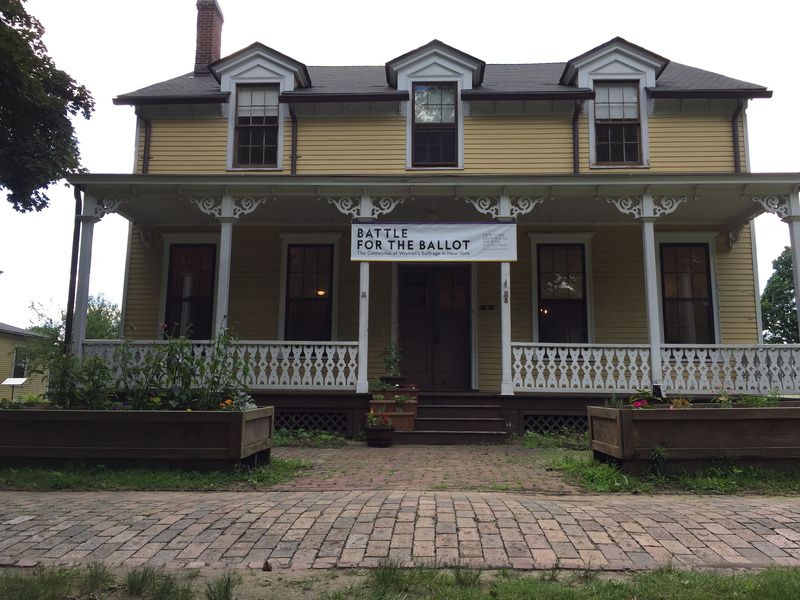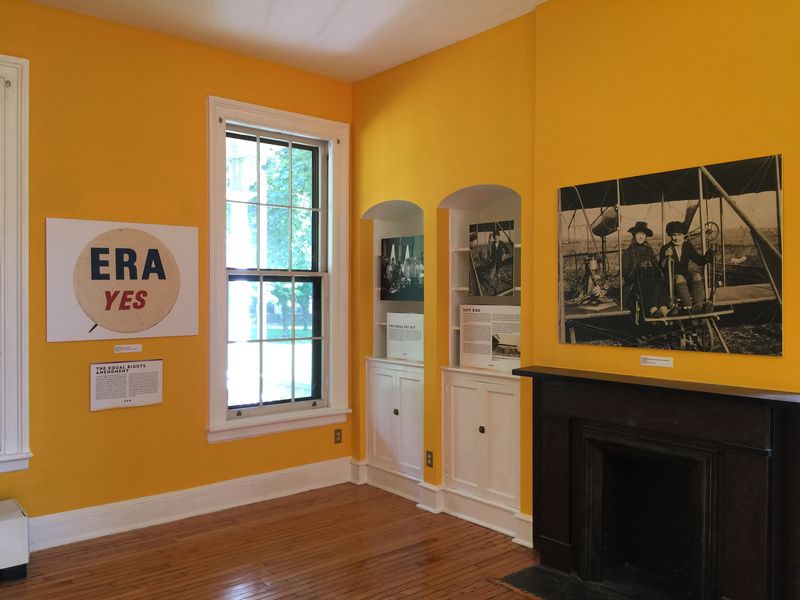Last Chance to Catch NYC's Holiday Notalgia Train
We met the voices of the NYC subway on our nostalgia ride this weekend!



Image by Rugan Lewis courtesy the New-York Historical Society
As a part of of the New-York Historical Society‘s Centennial Summer–a museum-wide series of free events presented in conjunction with exhibitions, films, and programs commemorating 1917– Governors Island is hosting an exhibit called “Battle for the Ballot” to celebrate the 100th anniversary of women’s suffrage. Every Saturday and Sunday from now until October 1, 2017, visitors can view this teen-curated, satellite exhibition in the Patricia D. Klingenstein Library to see historic artifacts and reproductions of art from the women’s suffrage movement.

The exhibit will be held in Building 18 of Governors Island’s historic Nolan Park. All of the buildings on the four-acre Nolan Park are 19th century brick and wood-frame houses, used for contemporary purposes like Battle for the Ballot. Image by Rugan Lewis courtesy the New-York Historical Society.
The idea behind The Battle for the Ballot exhibit is both to celebrate women winning the vote and inform visitors of its history, hopefully reminding them of the hard-fought battle and providing a clear historic picture of the path to success.
From 1869 until women won the vote in 1917, the suffragettes faced an uphill battle. After all, in the late 1800s Social Darwinism was at the peak of popularity, leading to the widely held belief that women’s skulls were physically smaller than men’s, thereby making women naturally inferior. But suffragettes pushed on. The exhibit traces this timeline all the way fromthe Seneca Falls Convention to the 1917 victory by displaying the parades, protests, and coalitions of the period in between.
The exhibit includes a slew of historic photographs of the suffragettes at work. One photograph shows women in the “Wake Up America” demonstration of 1917. Another intriguing photograph shows a long line of women participating in the 1913 Cap and Gown parade, where female graduates marched down the streets of New York City to represent the fact that many women were earning higher education degrees, yet still did not have a say in who ran the country.
The exhibit also explains obstacles, both the expected and obscure, that suffragettes dealt with, from court trials to unlikely rivals.

Image by Rugan Lewis courtesy the New-York Historical Society
For example, the passage of the Fourteenth and Fifteenth amendments granting former slaves citizenship and black men the right to vote actually made the suffrage movement more difficult. While the amendments provided sturdier ground for the arguments of suffragettes Susan B. Anthony and Elizabeth Cady Stanton (who are New York City natives), they fostered bitter divisions over strategy, race, and class within the suffrage movement.

Image by Rugan Lewis courtesy the New-York Historical Society
The suffragettes also frequently attempted to vote at whatever the cost– even arrest, which happened in 1872 when Anthony and 13 other women were taken into custody. This trial ultimately led to the creation of the National Woman Suffrage Association, which would eventually become the National American Woman Suffrage Association (NAWSA) in 1890.

Image by Rugan Lewis courtesy the New-York Historical Society
Early suffragettes even had to deal with the age-old problem of distracting dress (which still doesn’t seem to be completely eradicated.) In 1851, Elizabeth Smith Miller of Geneva of New York started sporting Turkish-style pantaloons under knee-length skirts. The idea was not to make a fashion statement, but a statement using fashion, with the pantaloons as a reminder of women’s equality to men.
As mentioned, “Battle for the Ballot” is part of the New-York Historical Society‘s series “Centennial Summer,” which honors milestones and major events of 1917. The series includes everything from women’s suffrage, to the life of JFK, American involvement in World War I, and more.
Dr. Louise Mirrer, president and CEO of the New-York Historical Society, encourages Centennial Summer visitors to reflect on how these milestones relate to the present-day, saying, “The issues Americans confronted at the time may seem remote to us today. Still, many of the questions raised—above all, equal rights and Americans’ obligations on foreign shores—are still pondered in our time.”
The free “Battle for the Ballot” exhibit runs from 12 PM – 6 PM every Saturday and Sunday until October 1 in Building 18 of Governor Island’s Nolan Park.
Next, check out Why Are There No Women Statues in Central Park? New Fund Seeks to Change That and The Top 10 Secrets of the New-York Historical Society Museum & Library in NYC. Get in touch with the author: @Erika_A_Stark.
Subscribe to our newsletter